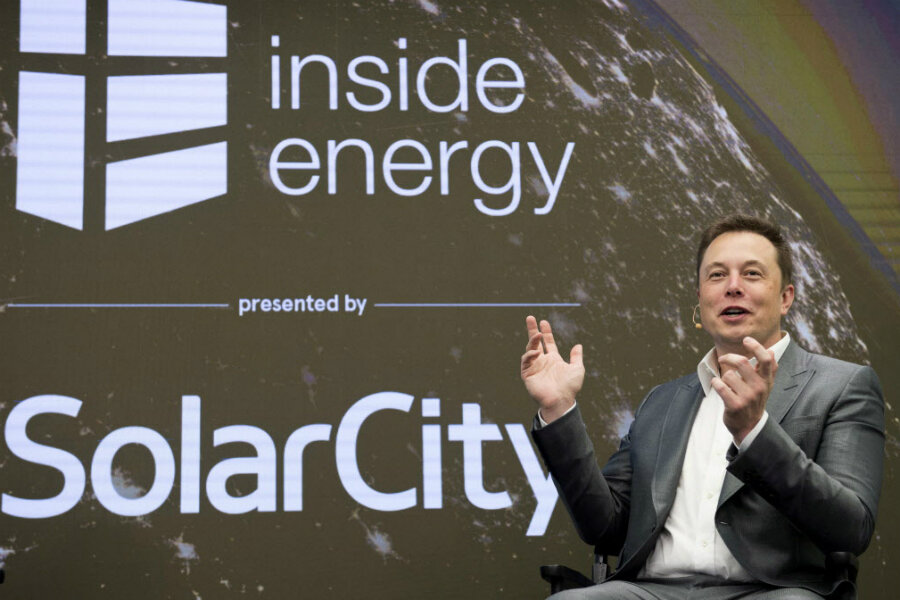What would a Tesla-SolarCity merger mean for Musk’s master plan?
Loading...
Tesla Motors Inc and SolarCity Corp. could soon merge, sources say, as Elon Musk continues to advance his company’s solar strategy.
The deal, as Mr. Musk proposed in his “Master Plan, Part Deux,” aims to give consumers an integrated low-carbon power system: Tesla batteries and cars, powered in-home by SolarCity panels. The merger could be announced as early as Monday, anonymous internal sources told Reuters.
"Instead of making three trips to a house to put in a car charger and solar panels and battery pack, you can integrate that into a single visit," Musk told reporters. "It's an obvious thing to do."
Musk, who is the biggest shareholder in Tesla and SolarCity, is also chairman of the latter company. But the merger plan got off to a precarious start, despite Musk’s stake in both companies: SolarCity assembled an independent special committee to consider Tesla’s offer. Musk’s cousins, SolarCity chief executive officer Lyndon Rive and board member Peter Rive, recused themselves from voting on the deal.
Because of the confidential nature of negotiations, sources asked not to be identified. They said the merger will likely include a “go-shop” provision, which would allow SolarCity to consider offers from other companies after signing the deal – but only for a short time.
Tesla shareholders have approached the proposed deal, which would mean a $2.8 billion debt for the company, with some apprehension. Shares dropped below $190 per share after Tesla announced its offer on June 21.
“Ideally you want to see Tesla focus on Tesla – building Teslas and expanding the cars,” Ivan Feinseth, an analyst at Tigress Financial Partners, told Reuters in June. “Maybe the feeling is that this takes away focus, and it could financially strain Tesla.”
But as Tesla continues to recast itself as an all-in-one green energy company, shareholders have warmed up to the merger. Shares had recovered to $234.79 when trading ended on Friday.
Musk, who also heads the aeronautics company SpaceX, laid out his plan to buy SolarCity in a blog post titled “Master Plan, Part Deux.” The CEO described an integrated product, comprising of SolarCity panels and Tesla lithium-ion batteries, that would allow consumers to generate their own utilities with a simple service contract. It is unclear how these solar units would work within a government-subsidized energy industry.
“The point of all this was, and remains, accelerating the advent of sustainable energy, so that we can imagine far into the future and life is still good,” Musk wrote. “That's what 'sustainable' means. It's not some silly, hippy thing – it matters for everyone.”
Last week, Tesla opened a $5-billion Gigafactory in Nevada in an effort to expand US-made lithium ion battery production. The auto company has also announced plans to develop large electric vehicles, including heavy duty trucks and “high passenger-density urban transport” vehicles, with a continued emphasis on autonomy.
This story includes material from Reuters.








